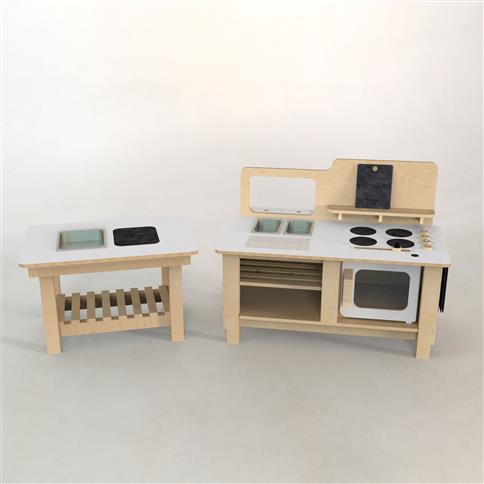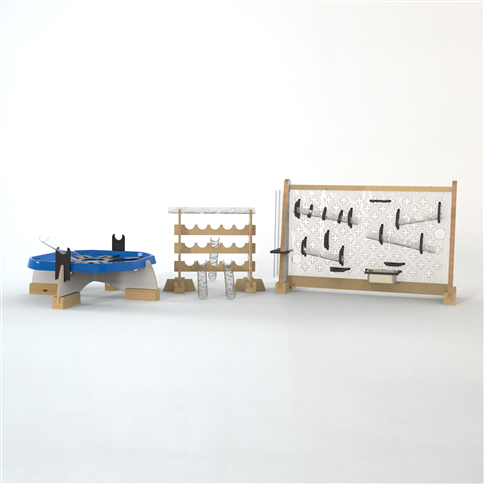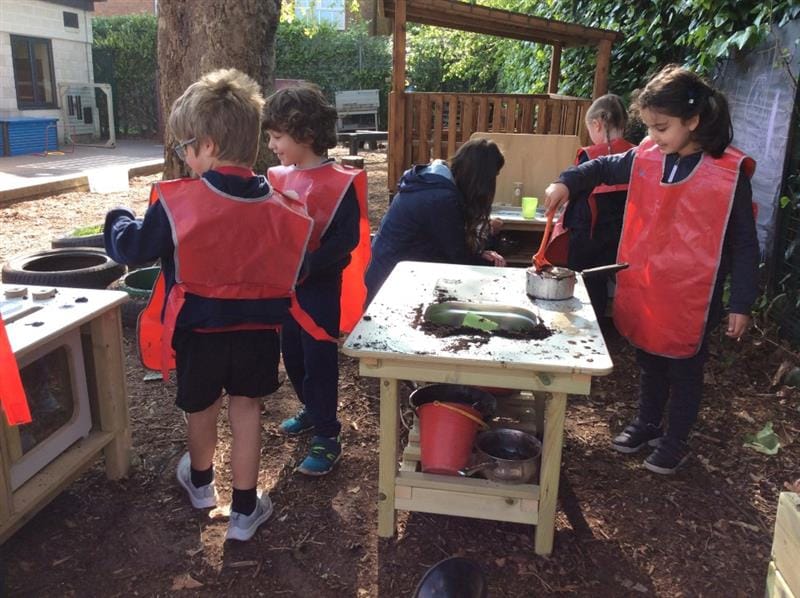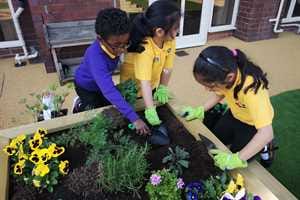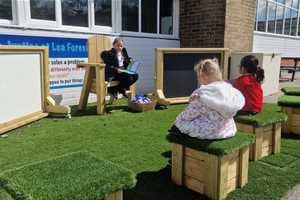
Outdoor Learning and Play
Continuous Provision and how play products can help when setting up specific classroom areas, inside and outside!
Continuous provision refers to quality resources provided both inside and outside the classroom for children to interact with and access daily. The purpose of continuous provision is to offer children an environment that is safe for them to explore whilst also providing a level of challenge. Pupils gain independence through play and discovery and learn to make decisions. Children should be able to continue their learning in provision in the absence of an adult.
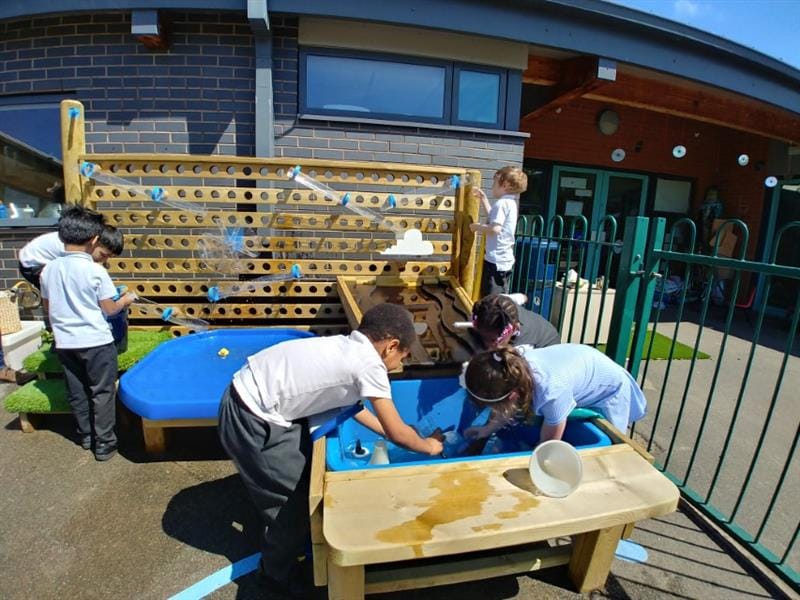
Continuous provision promotes active, curious learners and allows pupils to select areas of their setting which interest them and which they would like to revisit.
Opportunities for rich conversations can be had, with practitioners modelling speech and extending vocabulary. When continuous provision is valued, open-ended, skills-driven and carefully resourced, children become self-confident, curious and resilient.
When to Change Continuous Provision?
Practitioners continually assess each area of continuous provision with children’s learning in mind. The location of the area, children’s interests and next steps will be considered and resources added accordingly. Although, within each area of provision, there will be a core range of resources that children can use all of the time, throughout the year. Pupils need to know exactly where to go when they need to make a train to transport their characters!
Pupils should be given time to fully explore the different areas of provision. It is important for children to have opportunities to revisit, to build on what they did yesterday or even a few weeks ago. Sometimes children need to be given sufficient time to fully explore and master concepts. In continuous provision, children apply taught skills and knowledge, internalising and making sense of concepts at a deeper level. There may be times when specific areas of provision target a focused skill or contain an explicit challenge for the class to complete.
Having said this, by making changes to continuous provision, pupils can be challenged and encouraged to try new things. Areas can be enhanced based on current class topics which ensure that provision does not stagnate, leading to disengagement. Through intuition and observation, practitioners know when to alter continuous provision to allow for improvement and at times small adjustments can make a big difference.
Defined Spaces
Clearly defined areas of provision tend to engage children and provide fewer distractions. Careful consideration needs to be given to the layout of learning spaces as pupils need room to collaborate, form relationships and communicate. Certain areas may work well alongside each other to create meaningful learning such as a role play area next to a mark making station.
When children enter a clearly defined space with a known purpose they are often encouraged to focus. A Weaving Trellis, Moveable Play Panel or Whiteboard can be useful when setting clear divides between areas. Furniture such as Construction and Sorting Tables can be arranged in a Y shape which can help to create different sections when placed in the middle of a space or off a wall.
How to Organise the Learning Environment?
When planning different areas of provision, it is important to think about classroom organisation and flow. Toy cars and blocks shouldn’t be in an area of heavy footfall, small world play requires a calm, quiet corner with possible different levels and a storytelling area needs a cosy space with opportunities to use props/puppets. Sand and water areas may be located next to each other to open up new possibilities and a modelling area may be situated next to an art space to allow pupils to paint and decorate their creations.
Product Spotlight
There may be discrete areas for mark-making and maths but there should be opportunities to explore key skills in other areas of the learning space such as playing with numbered cars or writing menus in the mud kitchen.
Resources should be clearly labelled with pictures or words and stored systematically so that children can find things easily and put things away independently and reliably. Pentagon’s range of Storage Units and Self -Selecting Stores to ensure that equipment can be selected safely and pupils can make their own choices.
The Different Areas of Provision
To develop continuous provision, practitioners may begin to group elements of play together to form learning areas/zones. Zones can be based on experiences practitioners would like to develop and children’s interests. Detailed below are ideas for the types or resources to include in each zone when setting up continuous provision in your setting.
Outdoor Sand Area
Skills
• Discovering
• Moulding
• Patting
• Pouring
• Tipping
• Filling
• Pattern making
• Wet/dry textures
Resources
• Pentagon’s Sand Table/Box
• Brush/Dustpan
• Rakes
• Clear containers of various sizes/Buckets
• Spades/spoons
• Moulds
• Scoops
• Funnels
• Muffin Tray
Enhancements
• Coloured Sand
• Natural Materials – shells/pebbles/twigs
• Lollipop Sticks
• Paintbrushes
• Sand Wheel
• Pebbles
• Figures
• Mirrors
• Plastic Guttering
Outdoor Water Area
Skills
• Pouring
• Filling
• Emptying
• Creating sounds
• Observation
• Extending imagination
• Developing fine motor skills
• Problem-solving
Resources
• Pentagon’s Water Play Package
• Aprons
• Mop/Bucket
• Water Channels
• Clear containers of various sizes with wide and narrow necks
• Sponges
• Water Wheels/Watering Cans
• Fishing nets
• Boats
Enhancements
• Baby bath/dolls/dolls clothes
• Tea set
• Numbered plastic ducks
• Plastic toys – mermaids/spiders
• Glitter
• Food colouring
• Straws
• Ice
• Corks
• Fruit
• Measuring Jugs
Outdoor Large Construction Area
Skills
• Sustained concentration
• Problem-solving
• Labelling
• Use of mathematical/
positional language
Resources
• Pentagon Play Builder
• Construction Skip
• Construction Table
• Photographs of constructions
• Mark making equipment/clipboards
• Books/Design plans
Enhancements
• Small World Figures
• Tape measure/metre stick
• Recycled materials
• Instruction cards/prompts
Role Play Area
Skills
• Co-operation
• Turn-taking
• Imagination
• Awareness of space
• Exploring and selecting materials
• Develop vocabulary skills
• Listening to others
Resources
• Pentagon’s Giant Playhouse/Lookout Cabin
• Chairs
• Desk
• Telephone
• Keyboard
• Cooker
• Mark making materials to create menus/pictures/price lists/letters
• Dressing up clothes/fabrics
• Tea set/cutlery
Enhancements(Depending on children’s interests/current topics)
• Tickets
• Stamps
• Dolls
• Posters/charts
• Story/reference books/magazines
• Cameras
• Walkie Talkies
• Uniforms/Multi-Cultural Costumes
Small World Area
Skills
• Create stories from known experiences
• Self- regulation
• Exchanging ideas
• Self-expression
• Confidence
• Hand/eye coordination
Resources
• Figures
• Dolls house
• Garage
• Floor mat/play silk
• Vehicles
• Roads
• Fields
• Trees
• Blocks
• Boxes
• Pieces of fabric/carpet
Enhancements (Depending on children’s interests/current topics)
• Different animals – farm/zoo/dinosaurs
• Different buildings – zoo/castle/airport/cave/shop
• People with a variety of occupations – doctor/firefighter/farmer/bus driver
• Different vehicles – bus/train/spaceship/jeep
• Puppets
• Junk Materials
Outdoor Physical Play Area
Skills
• Experiment with different ways of moving
• Travel with confidence
• Understand how to use equipment safely
Resources
• Pentagon Climber/Trim Trail
• Pentagon Play Builder Set
• Roadway/Range of Vehicles
• Den posts/Material to create dens
• Mark Making Panel/Pens/Chalks
Enhancements
• Crates/tyres/logs
• Hoops/cones/balls/skipping ropes
• Parachute/tent/tunne
• Stopwatch
• Circus Skills Equipment
• Stepping stones
• Rockers
Continuous provision sets the tone for your Early Years/KS1 classroom. Resources are readily available for pupils all year long, allowing them to learn and progress independently, alongside guided teaching. Young children enjoy learning through discovery and exploration but at times it may be appropriate to scaffold learning and model some ideas for how to play with equipment, particularly at the beginning of a new year.

As the academic years, progress and children’s skills improve new resources may be added to the provision, helping children to progress. Open-ended resources which can be used and handled in multiple ways help to sustain attention and challenge pupils. Enhancements can be added to provision to help focus on a particular topic/theme or to target a specific skill that needs to be addressed.
Research suggests that children in KS1, particularly year 1should experience some play-based activities that give access to opportunities such as sand and water, role play, construction and outdoor learning. Year 1 teachers should be encouraged to increase opportunities for active and independent learning through play.
Every setting and cohort of children will be different and it is important to consider your school’s needs and ethos when designing your continuous provision layout. Team Pentagon are experts at creating skills-based environments where children’s enjoyment and play are paramount.
.JPG)
.JPG)
